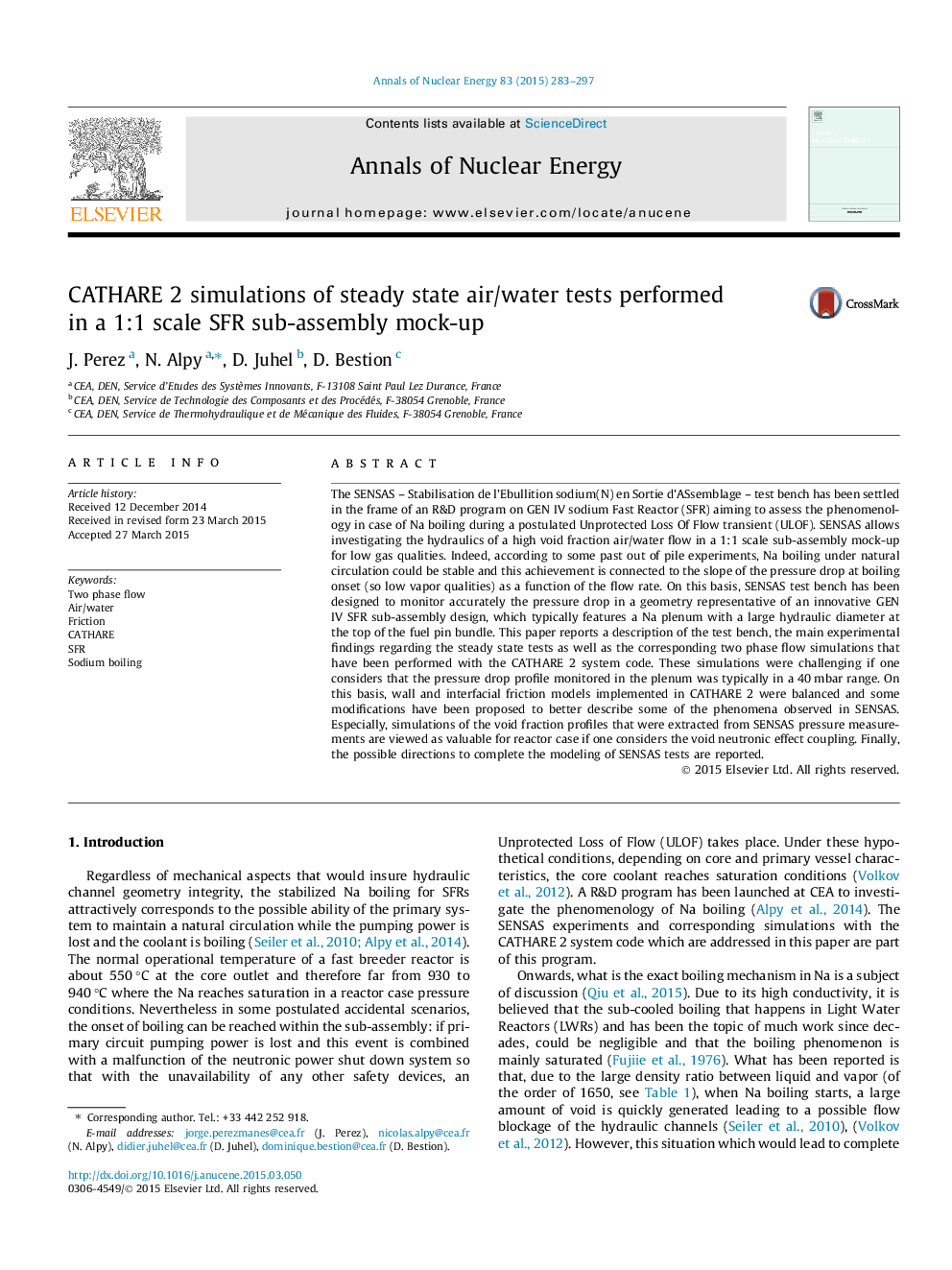| Article ID | Journal | Published Year | Pages | File Type |
|---|---|---|---|---|
| 8068461 | Annals of Nuclear Energy | 2015 | 15 Pages |
Abstract
The SENSAS - Stabilisation de l'Ebullition sodium(N) en Sortie d'ASsemblage - test bench has been settled in the frame of an R&D program on GEN IV sodium Fast Reactor (SFR) aiming to assess the phenomenology in case of Na boiling during a postulated Unprotected Loss Of Flow transient (ULOF). SENSAS allows investigating the hydraulics of a high void fraction air/water flow in a 1:1 scale sub-assembly mock-up for low gas qualities. Indeed, according to some past out of pile experiments, Na boiling under natural circulation could be stable and this achievement is connected to the slope of the pressure drop at boiling onset (so low vapor qualities) as a function of the flow rate. On this basis, SENSAS test bench has been designed to monitor accurately the pressure drop in a geometry representative of an innovative GEN IV SFR sub-assembly design, which typically features a Na plenum with a large hydraulic diameter at the top of the fuel pin bundle. This paper reports a description of the test bench, the main experimental findings regarding the steady state tests as well as the corresponding two phase flow simulations that have been performed with the CATHARE 2 system code. These simulations were challenging if one considers that the pressure drop profile monitored in the plenum was typically in a 40Â mbar range. On this basis, wall and interfacial friction models implemented in CATHARE 2 were balanced and some modifications have been proposed to better describe some of the phenomena observed in SENSAS. Especially, simulations of the void fraction profiles that were extracted from SENSAS pressure measurements are viewed as valuable for reactor case if one considers the void neutronic effect coupling. Finally, the possible directions to complete the modeling of SENSAS tests are reported.
Keywords
Related Topics
Physical Sciences and Engineering
Energy
Energy Engineering and Power Technology
Authors
J. Perez, N. Alpy, D. Juhel, D. Bestion,
